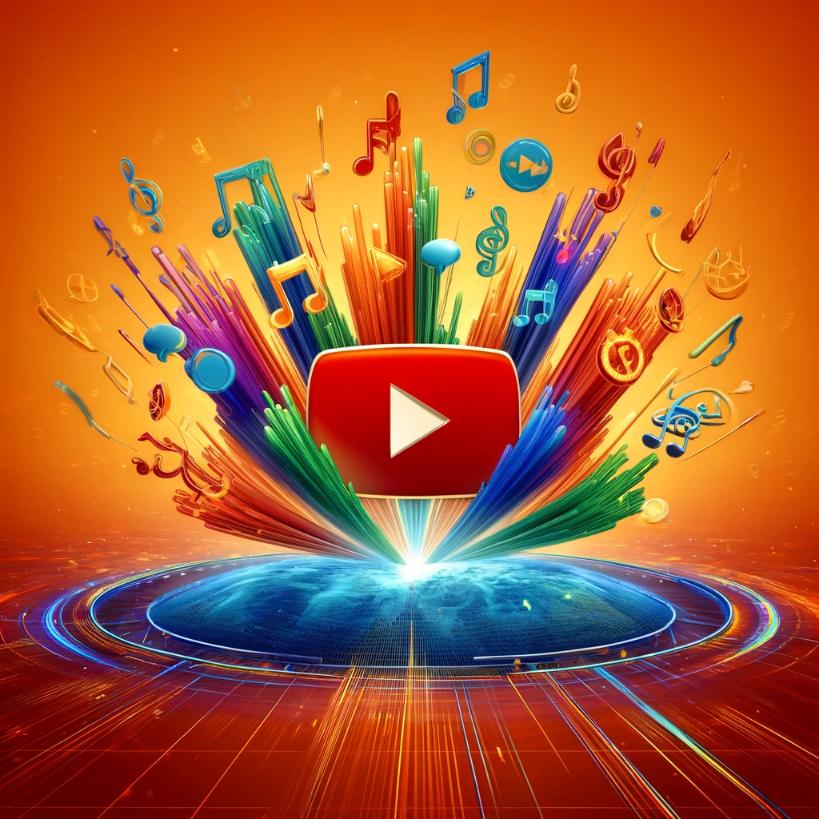YouTube Multi-Language Audio: Unlocking Global Audiences for Content Creators
Introduction
In today’s digitally interconnected world, YouTube stands as a pivotal platform for sharing content that crosses borders and cultural boundaries. With the vast expansion of the internet, content creators now have the opportunity to reach a global audience more easily than ever. However, language barriers often limit this potential, confining creators to audiences that share their language. Enter YouTube Multi-Language Audio—a feature that can transform accessibility and viewer engagement by offering videos in multiple languages.
YouTube Multi-Language Audio allows creators to add different audio tracks to a single video, each in a different language. This capability not only broadens the reach of their content but also enhances viewer experience by providing native language viewing options. As a result, creators can effectively communicate with audiences across the globe, regardless of linguistic differences.
The relevance of multi-language audio in today’s global digital landscape cannot be overstated. It taps into the growing demand for accessible and inclusive content, meeting the needs of diverse audiences. By implementing multi-language audio, YouTube creators can significantly increase their videos’ accessibility, engagement, and appeal, breaking down the barriers that language differences create. This introduction to multi-language audio explores its transformative potential for creators looking to make a mark on the international stage.
Overview of Multi-Language Audio on YouTube
What Are Multi-Language Audio Tracks?
 Multi-language audio tracks on YouTube are additional audio versions of a video, each in a different language. This feature allows creators to upload multiple synchronized audio options that viewers can select when watching a video. It’s an inclusive approach that caters to a diverse global audience, making content more accessible and engaging for people from different linguistic backgrounds.
Multi-language audio tracks on YouTube are additional audio versions of a video, each in a different language. This feature allows creators to upload multiple synchronized audio options that viewers can select when watching a video. It’s an inclusive approach that caters to a diverse global audience, making content more accessible and engaging for people from different linguistic backgrounds.
How Do Multi-Language Audio Tracks Function on YouTube?
When viewers access a video with multi-language audio options, they can select their preferred language from the video settings, similar to choosing subtitles. The selected audio track will then play along with the video, providing a seamless viewing experience in the viewer’s native language. This feature is integrated into the YouTube player, making it easy for viewers to switch between different audio tracks as needed.
The Technology Behind Multi-Language Audio
YouTube allows for the addition of multiple language tracks through manual processes:
- Manual Options:
- User-Uploaded Audio Tracks: Creators can record or obtain professionally translated and dubbed audio tracks and upload these directly to their videos. This method ensures that translations are accurate, culturally sensitive, and professionally presented.
- Collaboration with Multilingual Users: Creators can collaborate with speakers of other languages to provide authentic and engaging audio tracks. This enhances the quality of the audio and adds a personal touch to the content.
Implementing Multi-Language Audio
To add multiple audio tracks, creators must first prepare the audio files in the desired languages. These files are then uploaded to YouTube via the video manager, where the creator can assign each track to the corresponding language. This setup enables the YouTube system to recognize and offer these different audio options to viewers based on their language settings.
Utilizing multi-language audio on YouTube effectively requires manual effort to ensure high-quality content delivery. This feature underscores YouTube’s commitment to global accessibility and user engagement by providing tools that help creators expand their reach and connect with audiences in a deeply personalized way.
Benefits of Multi-Language Audio
Broader Audience Reach
Offering videos in multiple languages dramatically expands the potential reach of YouTube content. By providing audio tracks in various languages, creators can effectively tap into global markets and attract viewers from diverse linguistic backgrounds. This inclusivity breaks down the barriers that often limit a video’s reach to only those who understand the language in which it was originally produced. As a result, content becomes accessible to a wider audience, increasing the overall viewership and expanding the creator’s influence globally.
Increased Engagement
Multi-language content naturally leads to increased viewer engagement. When audiences can consume content in their native language, they are more likely to watch the video for longer periods. This extended engagement not only boosts the individual video’s performance metrics but also enhances the overall user experience. Moreover, viewers are more likely to interact with the content through likes, comments, and shares when they fully understand and resonate with the audio, fostering a deeper connection with the channel.
Enhanced SEO
Having videos available in multiple languages can significantly improve a channel’s search engine optimization (SEO) across different regions and search engines. Each language version of a video can rank in search results in various linguistic markets, effectively multiplying the visibility of the content. Additionally, YouTube’s algorithms favor content that engages a broader audience, further boosting SEO performance by showing the video as a recommended option to similar audiences across different language groups.
Monetization Opportunities
With increased viewership and engagement from a diverse global audience comes enhanced monetization opportunities. Ads can be tailored to different audiences, increasing their relevance and effectiveness, which in turn boosts potential ad revenue. Moreover, a broader audience base makes the channel more attractive to sponsors looking for international exposure. This increased commercial appeal can lead to higher rates for sponsored content, partnerships, and other monetization strategies that leverage a multinational audience.
In summary, multi-language audio not only broadens the scope and reach of YouTube content but also enhances viewer engagement, SEO, and monetization potential. By investing in multi-language capabilities, creators can significantly elevate their channel’s global appeal and operational success.
Implementing Multi-Language Audio
 Implementing multi-language audio tracks on YouTube can significantly enhance a video’s accessibility and reach. Below is a step-by-step guide on how to add multiple audio tracks to your YouTube videos, followed by best practices for ensuring high-quality translations and voice-overs.
Implementing multi-language audio tracks on YouTube can significantly enhance a video’s accessibility and reach. Below is a step-by-step guide on how to add multiple audio tracks to your YouTube videos, followed by best practices for ensuring high-quality translations and voice-overs.
Step-by-Step Guide to Adding Multiple Audio Tracks
Prepare Your Audio Files: Before uploading your video, record or acquire professionally translated and voiced audio tracks for each language you want to offer. Ensure each audio file is properly synchronized with the video.
Upload Your Video: Log in to YouTube and upload your video as you normally would. Fill in all the basic information, such as title, description, and tags.
Access YouTube Studio: Once your video is uploaded, go to YouTube Studio to manage your video settings.
Add Audio Tracks: In the video editor section of YouTube Studio, select the video to which you want to add audio tracks. Navigate to the ‘Advanced’ settings where you will find options to manage multiple audio tracks.
Upload Audio Tracks: Upload each of your prepared audio tracks. Assign each track a language label so viewers can easily select their preferred language when watching your video.
Publish or Update Your Video: After uploading and properly labeling your audio tracks, review everything to ensure synchronization and accuracy, then publish or update your video.
Best Practices for Creating or Sourcing Quality Translations and Voice-Overs
Use Professional Services: For translations and voice-overs, consider hiring professional language service providers. Professionals ensure that the translations are accurate, culturally appropriate, and of high quality.
Check for Local Nuances: Make sure the translation takes into account local dialects, colloquialisms, and cultural nuances. This increases the authenticity of the audio and enhances viewer engagement.
Quality Control Processes: Implement quality control processes such as reviewing and proofreading translated scripts and listening to the audio tracks for any errors or synchronization issues before finalizing them.
Consistent Voice: Choose voice-over artists whose voice and tone match the original video’s style and brand voice. Consistency in voice and style across different languages helps maintain the brand’s identity and ensures a uniform viewer experience.
Feedback and Revisions: After the initial release of multilingual videos, gather viewer feedback specifically about the quality and accuracy of the translations and voice-overs. Use this feedback to make necessary revisions and improve future audio tracks.
By following these steps and adhering to best practices, you can effectively implement multi-language audio in your YouTube videos, making your content accessible to a global audience and enhancing viewer engagement across diverse linguistic backgrounds.
Challenges and Considerations
Implementing multi-language audio on YouTube, while beneficial, comes with its own set of challenges and considerations. Creators must navigate these carefully to ensure the integrity of their content and the satisfaction of their diverse audience.
Potential Challenges
Cost: Producing multiple audio tracks for a single video can be costly, especially when hiring professional translators and voice-over artists. Budget constraints may limit the number of languages a creator can realistically offer, potentially excluding parts of a global audience.
Maintaining Content Quality Across Languages: Ensuring that each language version maintains the same high quality as the original is challenging. It requires not only accurate translations but also high-quality audio production. Variations in quality can affect the brand’s reputation and viewer engagement.
Managing Viewer Expectations: Viewers may have expectations regarding the availability of multiple languages for every video, which can be difficult to meet consistently, especially for smaller channels or channels just beginning to expand into multi-language content. Regularly managing and setting clear expectations with the audience is crucial to avoid disappointment.
Ethical Considerations
Accuracy of Translations: Ensuring the accuracy of translations is critical not just for viewer comprehension but also for respecting the cultural and linguistic nuances of each audience segment. Poor translations can lead to misunderstandings and diminish the viewer’s experience.
Cultural Sensitivity: Translations must be culturally sensitive, avoiding stereotypes or offensive language. This requires a deep understanding of the target culture, which can often be achieved only through the involvement of native speakers or cultural consultants.
Inclusivity: Efforts should be made to include a wide range of languages, particularly those that are less commonly supported. This inclusivity can help bridge cultural divides and build a more diverse community around a channel.
Representation: It’s important that the voice-over artists represent the linguistic diversity they speak for, ensuring that the chosen voices are true to the cultures and communities of the language they are performing in.
Addressing these challenges and ethical considerations is essential for successfully implementing multi-language audio. Creators need to plan strategically, allocate resources wisely, and engage with cultural experts to ensure that their content is accessible, respectful, and engaging for a global audience.
Conclusion
Incorporating multi-language audio into YouTube videos is a transformative strategy that can significantly broaden a creator’s reach and deepen viewer engagement. By offering content in multiple languages, creators can tap into global markets, making their videos accessible to a diverse array of viewers who might otherwise have been excluded due to language barriers. This not only extends the potential audience but also enhances viewer interaction, as people are more likely to engage with content they can easily understand.
The benefits of multi-language audio are clear: from increased audience reach and improved engagement to enhanced SEO and greater monetization opportunities. These advantages collectively contribute to a stronger, more versatile online presence. Moreover, providing content in multiple languages demonstrates a commitment to inclusivity and cultural sensitivity, values that are increasingly important in today’s globalized digital landscape.
However, while the advantages are compelling, it’s important to recognize and navigate the associated challenges responsibly. The costs of translation and production, the necessity of maintaining consistent quality across languages, and the ethical considerations of cultural sensitivity must all be carefully managed. By addressing these aspects with thorough planning and professional resources, creators can successfully implement multi-language audio to expand their reach and impact.
YouTube creators are encouraged to view multi-language audio not just as an addition to their videos, but as a strategic tool for growth. It holds the key to unlocking a truly global audience, enhancing viewer satisfaction, and ultimately, driving channel success. With careful implementation and ongoing management, multi-language audio can elevate a channel from local to global, inviting viewers from across the world to engage deeply with your content.

